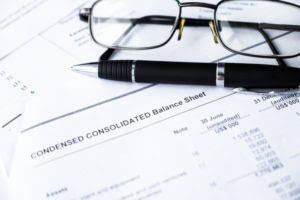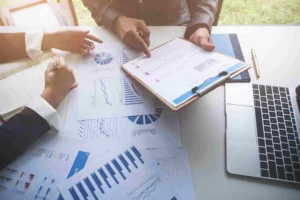
Regulatory bodies like the Public Company Accounting Oversight Board (PCAOB) oversee the audits of public companies and enforce the standards that auditors must follow. Companies must choose accounting types that align with these regulations. Different industries have different regulatory bodies that require specific standards for accounting practice.
Want More Helpful Articles About Running a Business?
Forensic accounting also involves investigating complex financial transactions, tracing the flow of funds, rebuilding financial records, and assessing damages. The findings of these operations are used in legal proceedings, where forensic accountants need to present their analysis, as expert witnesses. Below is a current liabilities example using the consolidated balance sheet of Macy’s Inc. (M) from the company’s 10-Q report reported on Aug. 3, 2019. Understanding liabilities is crucial for finance professionals to assess a company’s financial health and make informed decisions. For instance, in 2016, Johnson & Johnson reported $5.4 billion in other long-term liabilities, including legal settlements and environmental liabilities. Tesla Inc. had a short-term debt of $2.2 billion in 2019, primarily consisting of convertible notes and credit agreements.
Current Liabilities: What They Are and How to Calculate Them
It might be as simple as your electric bill, rent for your office or other types of business purchases. Here is a list of some of the most common examples of current liabilities. Current liabilities are obligations due within 12 months or within an operating cycle. On a balance sheet, liabilities types of liability accounts are listed according to the time when the obligation is due. The differences between financial accounting and managerial accounting are summarized in the table below. Scalability and flexibility are other factors to consider when customizing accounting approaches for business needs.
Everything You Need To Master Financial Modeling
Let’s look at a historical example using AT&T’s (T) 2020 balance sheet. The current/short-term liabilities are separated from long-term/non-current liabilities. Companies of all sizes finance part of their ongoing long-term operations by issuing bonds that are essentially loans from each party that purchases the bonds.

If your books are up to date, your assets should also equal the sum of your liabilities and equity. No one likes debt, but it’s an unavoidable part of running a small business. Accountants call the debts you record in your books “liabilities,” and knowing how to find and record them is an important part of bookkeeping and accounting. As a small business owner, you’re going to incur different types of liabilities as you operate.
- The impact of these liabilities can significantly influence a company’s financial statements, making it essential for businesses to monitor, manage and strategically plan their liability structure.
- They represent obligations or debts that a business owes to other parties, such as suppliers, lenders, and employees.
- Commercial paper is also a short-term debt instrument issued by a company.
- This means that businesses should choose an accounting type that allows them to adapt easily to changing requirements.
- Accounts payable is typically one of the largest current liability accounts on a company’s financial statements, and it represents unpaid supplier invoices.
Expenses are day-to-day costs a company is expected to pay, such as salaries. A company’s net worth, also known as shareholders’ equity or owner’s equity, is calculated by subtracting its total liabilities from its total assets. In other words, net worth represents the residual interest in a company’s assets after all liabilities have been settled. A positive net worth indicates that a company has more assets than liabilities, while a negative net worth indicates that a company’s liabilities exceed its assets. Measuring a company’s net worth helps stakeholders evaluate its financial strength and overall stability.
Accounting reporting of liabilities
Assets represent resources a company owns or controls with the expectation of deriving future economic benefits. Liabilities, on the other hand, represent obligations a company has to other parties. Financial statements, such as the balance sheet, represent a snapshot of a company’s assets, liabilities, and equity at a specific point in time. Assets and liabilities are treated differently in that assets have a normal debit balance, while liabilities have a normal credit balance. During the operating cycle, a company incurs various expenses for which it may not immediately pay cash. Instead, these expenses are recorded as short-term liabilities on the company’s balance sheet until they are settled.

Governmental accounting can be defined as the process of recording, analyzing, and reporting financial transactions that occur within the government. Governmental accounting aims to hold public officials accountable for the management of public funds. It ensures that government expenditures align with approved budget allocations.
Long-term liabilities

They monitor the financial progress of a project and also approve expenses while advising the project team on the implications of any expenses made. Below are some of the highlights from the income statement for Apple Inc. (AAPL) for its fiscal year 2021. Martin loves entrepreneurship and has helped dozens of entrepreneurs by validating the business idea, finding scalable customer acquisition channels, and building a data-driven organization. During his time working in investment banking, tech startups, and industry-leading companies he gained extensive knowledge in using different software tools to optimize business processes.

